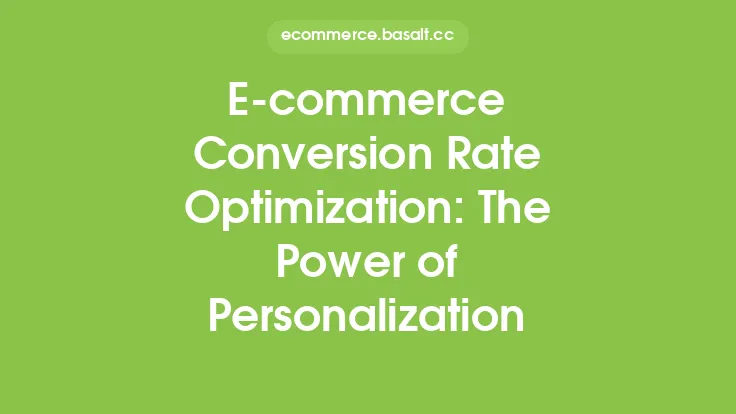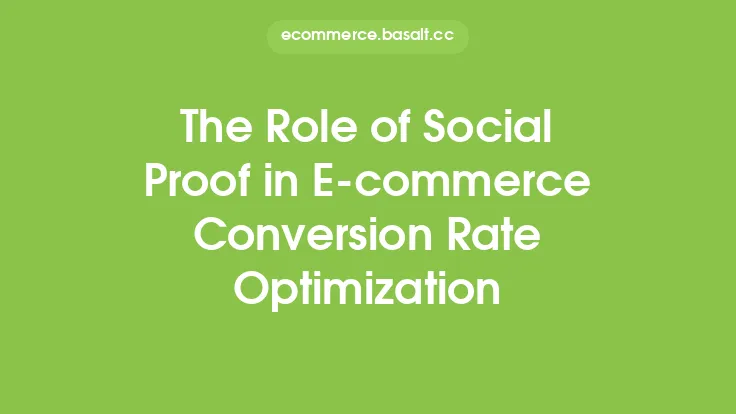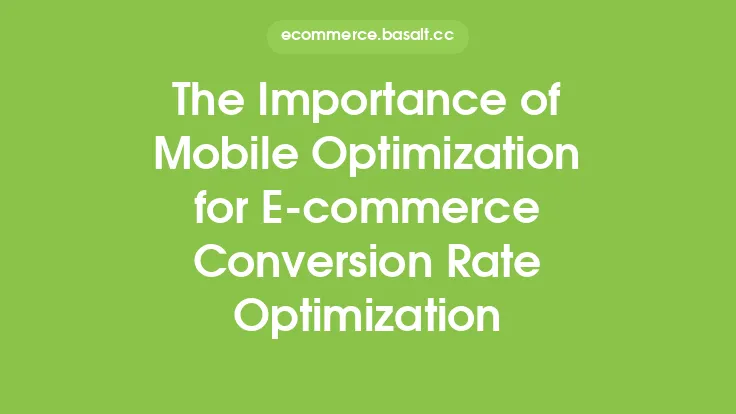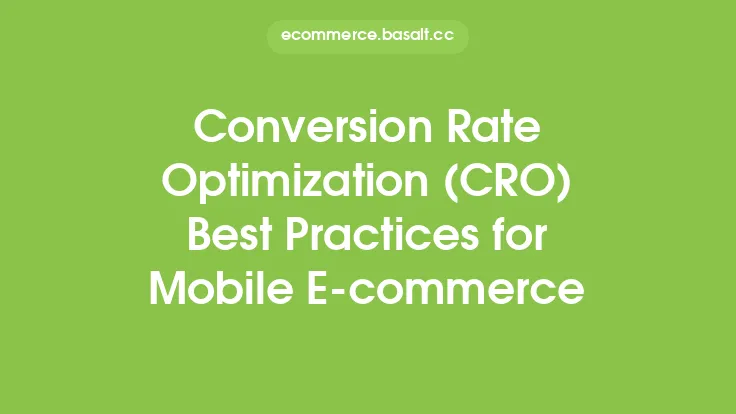In the world of e-commerce, conversion rate optimization (CRO) is a crucial aspect of any online business. It involves using various techniques to increase the percentage of website visitors who complete a desired action, such as making a purchase or filling out a form. One of the most effective ways to optimize conversion rates is through personalization. Personalization involves tailoring the user experience to individual customers based on their preferences, behaviors, and demographics. By providing a personalized experience, e-commerce businesses can increase customer engagement, build trust, and ultimately drive more conversions.
What is Personalization in E-commerce?
Personalization in e-commerce refers to the practice of using data and analytics to create a unique and relevant experience for each customer. This can be achieved through various techniques, such as product recommendations, content personalization, and personalized marketing messages. Personalization can be based on various factors, including customer demographics, browsing history, purchase behavior, and search queries. By using personalization, e-commerce businesses can create a more human-like experience for their customers, making them feel valued and understood.
Benefits of Personalization in E-commerce
The benefits of personalization in e-commerce are numerous. Some of the most significant advantages include:
- Increased conversions: Personalization can help increase conversions by providing customers with relevant and timely offers, recommendations, and content.
- Improved customer experience: Personalization can help create a more engaging and satisfying experience for customers, leading to increased loyalty and retention.
- Enhanced customer insights: Personalization requires the use of data and analytics, which can provide valuable insights into customer behavior and preferences.
- Competitive advantage: Personalization can help e-commerce businesses differentiate themselves from their competitors and establish a unique brand identity.
Types of Personalization in E-commerce
There are several types of personalization that can be used in e-commerce, including:
- Product recommendations: This involves suggesting products to customers based on their browsing history, purchase behavior, and search queries.
- Content personalization: This involves tailoring content, such as product descriptions and blog posts, to individual customers based on their interests and preferences.
- Email personalization: This involves sending personalized emails to customers based on their demographics, behavior, and preferences.
- Search personalization: This involves tailoring search results to individual customers based on their search history and preferences.
How to Implement Personalization in E-commerce
Implementing personalization in e-commerce requires a combination of data, analytics, and technology. Some of the key steps involved in implementing personalization include:
- Collecting and analyzing customer data: This involves collecting data on customer demographics, behavior, and preferences, and analyzing it to identify patterns and trends.
- Using personalization software: There are various personalization software solutions available that can help e-commerce businesses implement personalization, such as recommendation engines and content management systems.
- Creating personalized content: This involves creating content, such as product descriptions and blog posts, that is tailored to individual customers based on their interests and preferences.
- Testing and optimizing: This involves testing and optimizing personalization strategies to ensure they are effective and aligned with business goals.
Best Practices for Personalization in E-commerce
To get the most out of personalization in e-commerce, there are several best practices to keep in mind, including:
- Start with small, targeted campaigns: This involves starting with small, targeted personalization campaigns to test and refine strategies before scaling up.
- Use data and analytics: This involves using data and analytics to inform personalization strategies and ensure they are effective.
- Be transparent and respectful: This involves being transparent and respectful of customer data and preferences, and ensuring that personalization strategies are aligned with customer needs and expectations.
- Continuously test and optimize: This involves continuously testing and optimizing personalization strategies to ensure they are effective and aligned with business goals.
Common Challenges and Limitations of Personalization in E-commerce
While personalization can be a powerful tool for e-commerce businesses, there are several common challenges and limitations to be aware of, including:
- Data quality and availability: Personalization requires high-quality and relevant data, which can be a challenge for e-commerce businesses with limited resources or incomplete data.
- Complexity and scalability: Personalization can be complex and difficult to scale, particularly for large e-commerce businesses with multiple product lines and customer segments.
- Customer fatigue and overload: Personalization can be overwhelming or annoying for customers if not implemented carefully, leading to fatigue and decreased engagement.
- Privacy and security concerns: Personalization raises important privacy and security concerns, particularly around the use of customer data and analytics.
Future of Personalization in E-commerce
The future of personalization in e-commerce is exciting and rapidly evolving. Some of the key trends and developments to watch include:
- Artificial intelligence (AI) and machine learning (ML): AI and ML are being used to enhance personalization in e-commerce, particularly around product recommendations and content personalization.
- Internet of Things (IoT): The IoT is enabling new forms of personalization, such as personalized product recommendations based on customer behavior and preferences.
- Virtual and augmented reality: Virtual and augmented reality are being used to create immersive and personalized experiences for customers, particularly in the areas of product demonstration and customer service.
- Voice commerce: Voice commerce is enabling new forms of personalization, such as personalized product recommendations and content based on customer voice commands and preferences.





